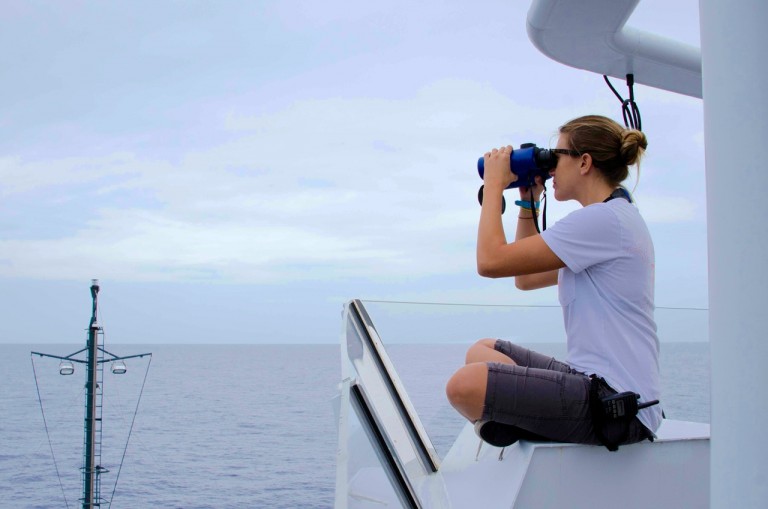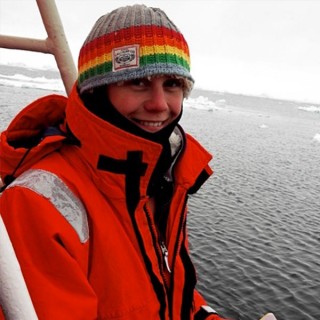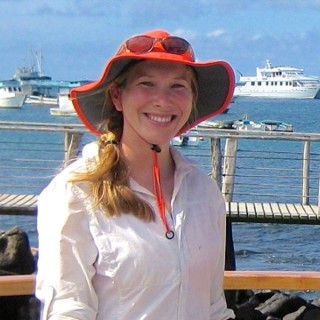At 7:00 this morning on the R/V Falkor, we were feeling lucky, because we’ve entered better whale habitat as we’ve moved south. Our sharp-eyed marine mammal observers were up and busy preparing for a second day scanning the waves for any signs of whales.
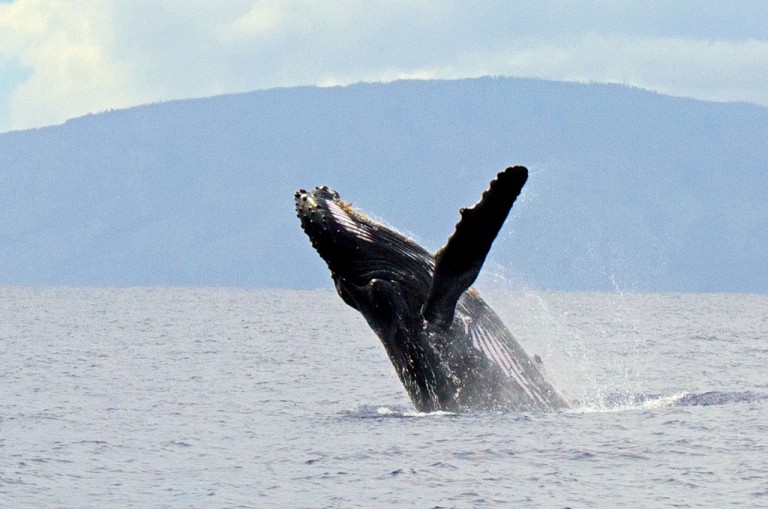
We had two humpback sightings yesterday, but there was a feeling of disappointment among the well-seasoned observers, mainly because humpbacks are not one of the species we’re here to study. But this is all part of the life of a marine mammal observer, which inevitably includes thinking about the challenges of sighting marine mammals.
These beautiful creatures do not spend all of their time at the surface, so we have to observe them when they come up for a breath. Sometimes it is quite obvious when they come up – the two humpback whales we saw yesterday were both launching themselves out of the water in a spectacular behavior known as breaching, which, as you can imagine, makes them quite easy to see. Other whales are more likely to lay at the surface with their tops emerged, looking like a large piece of driftwood and much more difficult to spot. One example of a species that exhibits this behavior is the sperm whale, which we are hoping to observe on this trip.
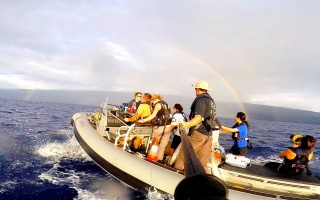
Challenges
While whale sightings are always riveting, waiting to see them can be slow and tiresome for your eyes. To combat this, we rotate around four different viewing locations on the vessel over two hours, and then each person takes a break.
Ocean conditions—be they wavy or calm—are another challenge for observing marine mammals. Conditions are often classified according to what is known as their Beaufort sea state (BSS), which goes from 1 to 12. A value of 1 refers to calm seas that are very good for whale watching, and 12 is hurricane-force winds and seas.
We started our observations yesterday in lovely sighting conditions – BSS of one and overcast skies, which help to minimize glare. But the winds picked up during the day, and we ended our observations early at a BSS of 5—which means very choppy seas with lingering white caps that are quite challenging for marine life sightings. Even though we only saw two whales yesterday, we still had a great day. We enjoyed sighting a few flying fish and watching red-footed boobies fly around the ship [see photo from yesterday’s blog].
Team Work
The overarching aim of our research is to investigate the feeding habits of toothed species such as sperm whales. However, as we are all acutely aware, these animals live secret lives deep below the water’s surface. It is not going to be easy to spot them and then keep track of the ones we do see. Data we will collect on the position of their food source using the Falkor‘s sonar systems might help us in the future to figure out where they should be. And when we do find them, we’ll deploy a small boat to take pictures for identification and use the hydrophone to listen for them to make sure that they are eating in the area.
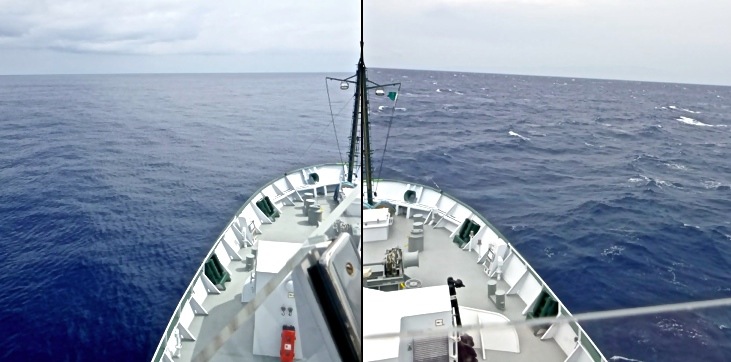
Collectively, that’s a lot of work that all has to happen mostly simultaneously. So, this will truly be a team effort for all involved: the captain and crew on the bridge, the marine mammal observers on deck, the acousticians inside the lab, and those out on the small boat. Communication will be the key to our success and that’s one of the things we were checking today.
During a small boat run aboard Atreyu, we tested our radio communication with the bridge. The marine mammal observers were still tirelessly scanning the oceans from all corners of the ship. Communications were good, and we were ready to begin. In spite of smooth teamwork and continuous high-quality data collection from the systems onboard, the ocean has kept the whales’ secret lives hidden for today. We’re counting on the “luck dragon” Falkor for tomorrow.
